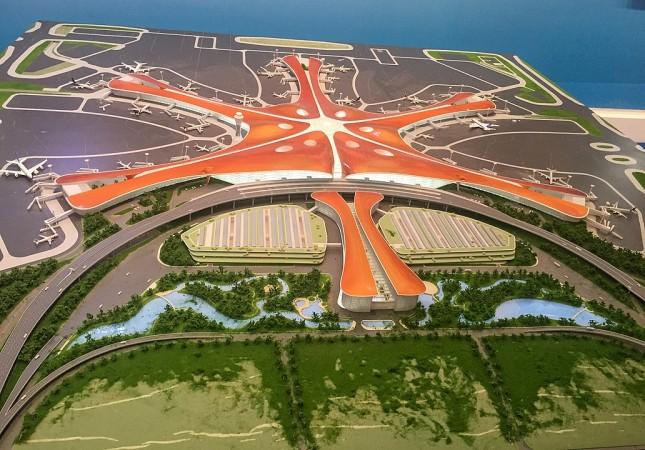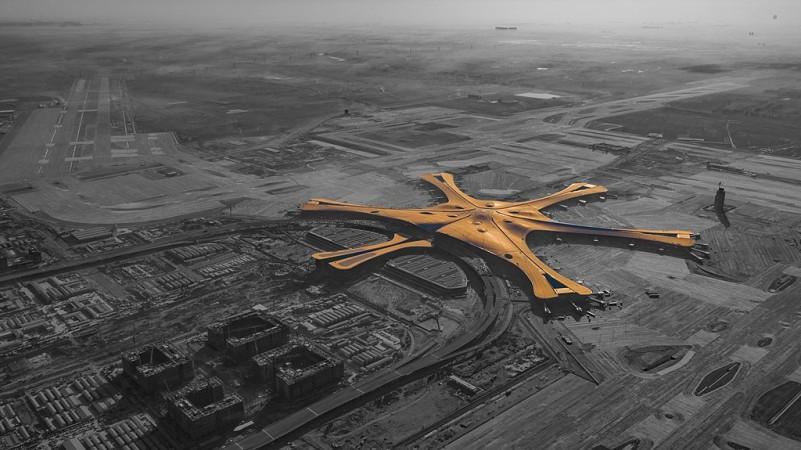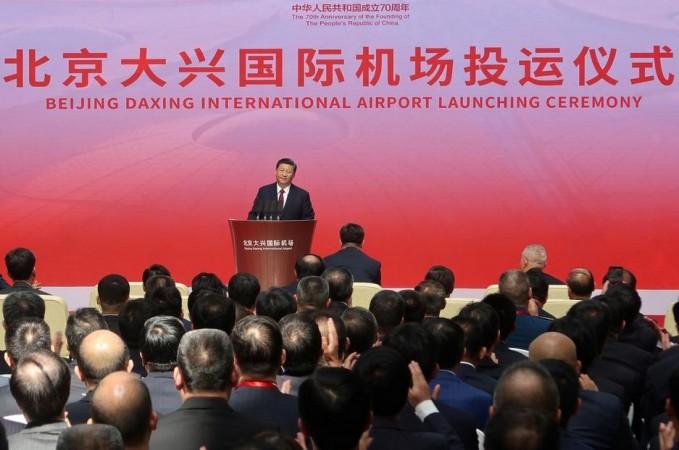
China's new Daxing International Airport in Beijing, which is estimated to have been worth $11 billion, was inaugurated by President Xi Jinping on Wednesday, September 25, ahead of the 70th anniversary of the People's Republic.
The China Southern Airlines and China Eastern Airlines had the first flights out of Daxing at 15:45 local time. Around seven Chinese airlines were scheduled to send their star aircraft for the first flights on Wednesday afternoon, including China Southern Airlines' A380, China Eastern Airlines' A350 and Air China's Boeing 747-8, state media reported.
Owing to the launch of this airport, 116 air routes were reportedly opened, including 101 domestic and 15 global. Chinese airspace availability is said to be limited as 80% of it is controlled by the military thus leaving little space for the commercial/private airliners to move in and out of China.
The airport's building, which is 700,000 square meters (the size of 98 football fields) is reported to house the world's largest terminal in a single building. It is also expected to have a passenger turnover of 130 million per year by 2040.
The Pheonix/star-shaped airport, which took nearly four years to construct, is designed by Architect Zaha Hadid. It has seven runways (of which four are operational as of now), parking space for 150 aeroplanes and capacity of handling 300 takeoffs and landings per hour.

This new airport in China is expected to ease pressure on the world's second-busiest terminal, the Beijing International Airport, according to the 2018 numbers by the World Airport Traffic Report.
According to local media reports, despite the terminal's massive size, the structural design is meant to help passengers transfer to domestic or international flights in 45 minutes.
Use of futuristic autonomous technology is also seen as an important highlight of the airport. Passengers will not be required to show documents such as boarding passes at security checks due to the presence of facial recognition technology. It is also expected to have robots that will help passengers in parking cars and moving luggage.
China: The leader of the skies?
With airports in China's major cities reaching its "saturation point" as per the Civil Administration of China, the new airport is expected to push the growth of China's civil aviation market.
Known to be the world's second-largest aviation market, according to estimates by the International Air Transport Association, China is likely to become the largest air market by 2025.

With Boeing's value alone being $3 trillion, the company states that by the next two decades, one out of five passengers in the world would be from China.
The country has been focused on building indigenous passenger aircraft and aims to achieve top-position in the aviation industry.
China military is expected to ease its air space restrictions to accommodate more inbound and outbound flights. Reports suggest the Chinese airspace at present is limited as 80 per cent of it is controlled by the military which has limited commercial and private airliners to move in and out of the country.
However, despite the limitations, the total annual passenger footfall at China's civil airports reached 1.26 billion in 2018 indicating an annual growth average of 11 per cent over the past 10 years.
Last year, China's 235 civil airports include 37 airports that have at least 10 million annual passenger footfall and 10 airports that had 30 million annual passengers.
The Daxing International Airport is expected to open by September 30 ahead of China's national day on October 1.
The relocation of airlines is to be completed by the winter of 2021.


















